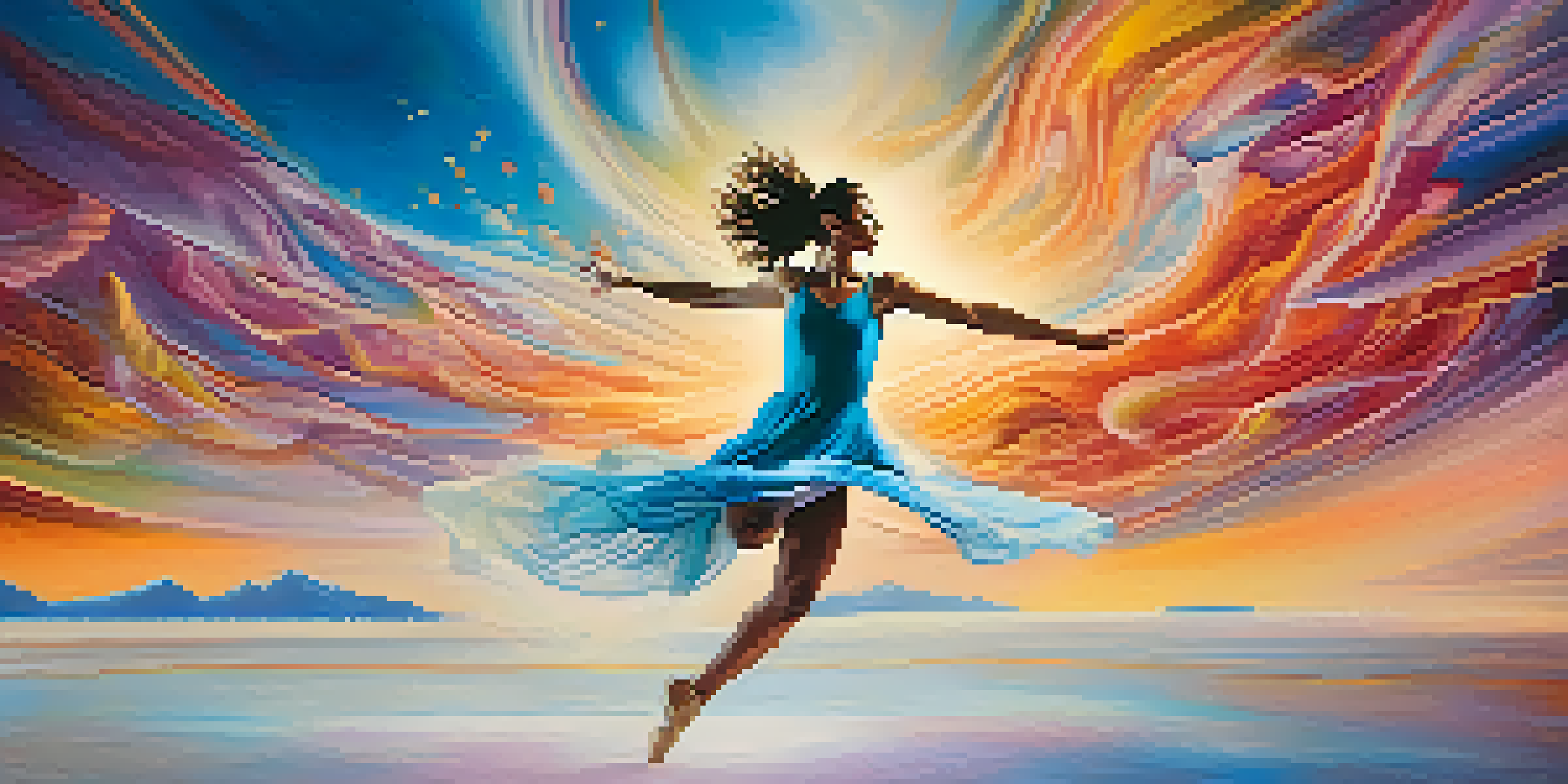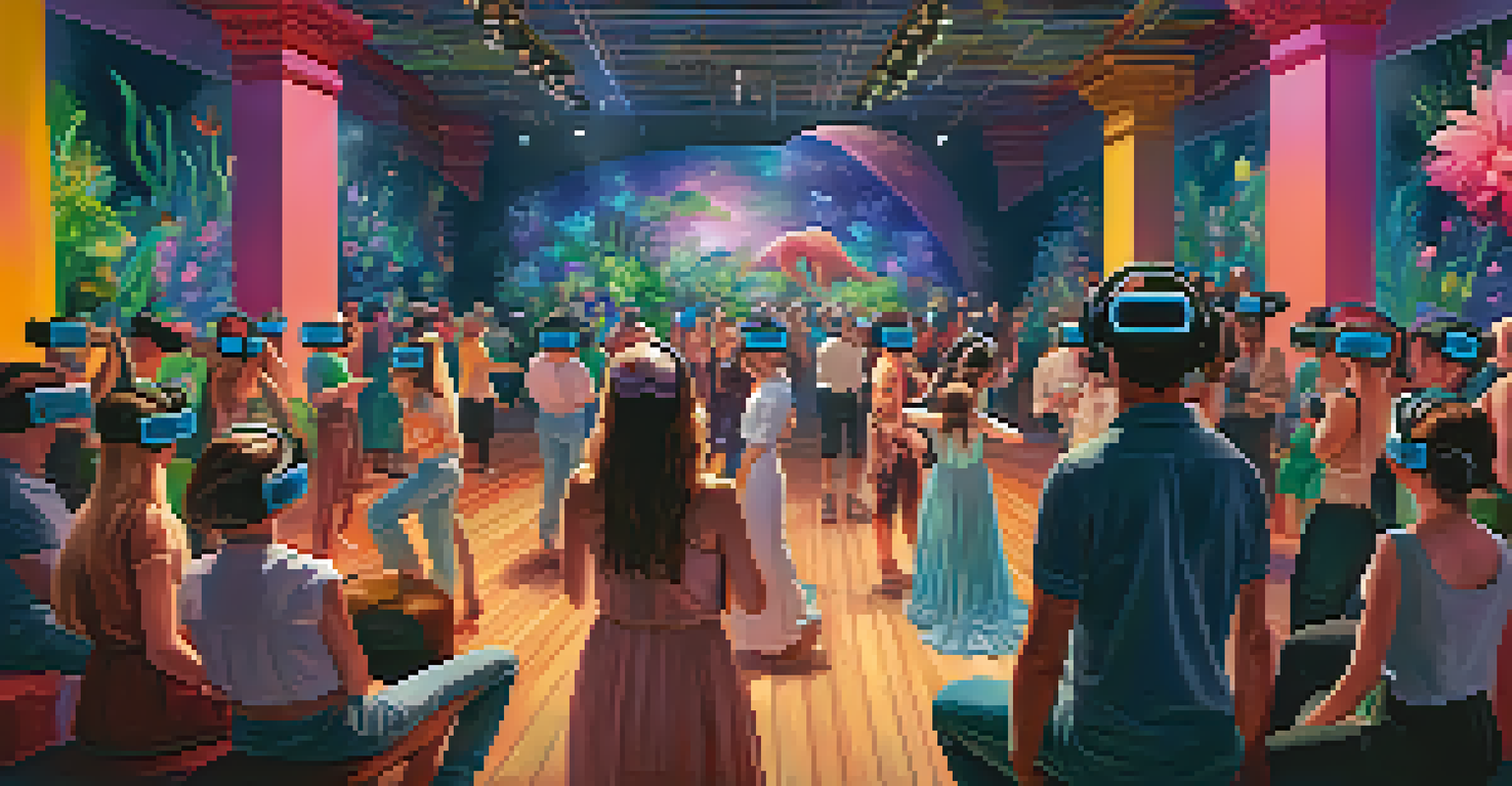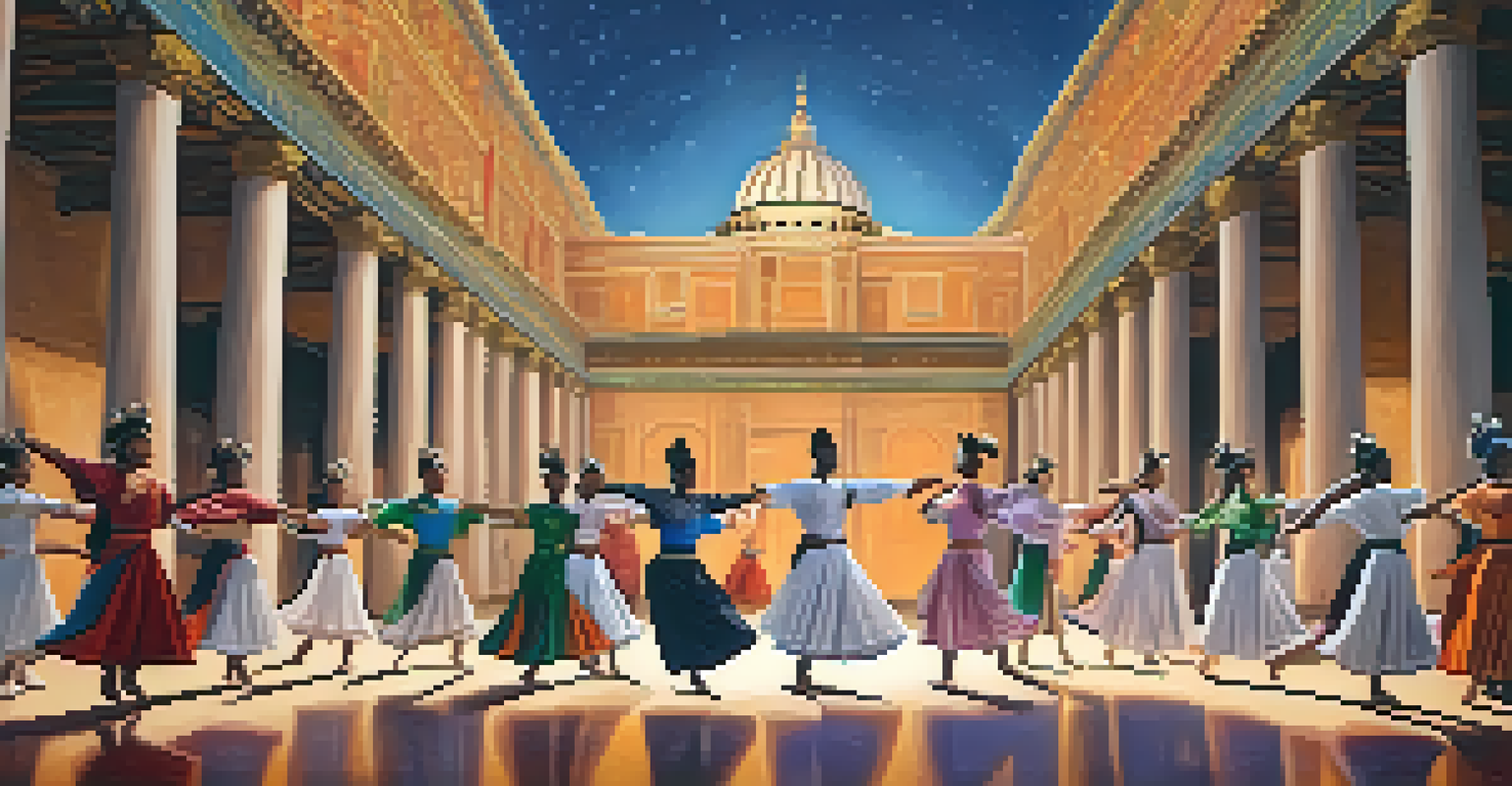The Role of Virtual Reality in Modern Dance Productions

Introduction to Virtual Reality in Dance
Virtual reality (VR) has emerged as a groundbreaking tool in the arts, particularly in modern dance. By immersing audiences in a digital environment, VR expands the creative possibilities for choreographers and dancers alike. This technology enables a fusion of physical movement with virtual elements, creating a multi-sensory experience that captivates viewers.
Virtual reality is the first step in a grand adventure into the landscape of the imagination.
Imagine watching a dancer perform not just on stage, but within a stunning 3D landscape that reacts to their movements. VR allows for this kind of innovative storytelling, where the setting is as dynamic as the dance itself. This intersection of technology and art opens up new narratives and emotional depths that traditional stage settings might not convey.
As we delve deeper into the world of virtual reality, we’ll explore how it enhances choreography, engages audiences, and challenges the very essence of dance as an art form. Stay tuned as we uncover the layers of this fascinating integration.
Enhancing Choreography with VR Technology
Choreographers are increasingly leveraging VR to visualize and experiment with movement in ways that were previously impossible. With VR, they can manipulate the environment and see how dancers interact with various digital elements in real time. This capability not only aids in creativity but also allows for precise adjustments to choreography before any physical rehearsal takes place.

For example, a choreographer might design a dance piece set in a surreal, floating landscape, where gravity behaves differently. Dancers can explore their movements in this space without the limitations of a traditional stage. This freedom can lead to groundbreaking choreography that pushes the boundaries of what dance can be.
VR Enhances Choreography Creativity
Choreographers can use VR to visualize and experiment with movement, allowing for innovative and precise adjustments to dance before physical rehearsals.
Moreover, VR can also simulate complex group dynamics, helping choreographers visualize formations and interactions more effectively. This makes the creative process not just easier but also more collaborative, as dancers can provide real-time feedback on how their movements feel within the virtual space.
Creating Immersive Audience Experiences
One of the most exciting aspects of VR in dance is its power to create immersive audience experiences. Instead of simply observing a performance, viewers can step into the virtual world, becoming active participants in the narrative. This shift transforms how audiences engage with the art form, making it a more personal and memorable experience.
Dance is the hidden language of the soul.
Imagine attending a dance performance where you can choose different vantage points or even follow a dancer on their journey through a fantastical realm. This level of interaction invites audiences to emotionally connect with the story in a way that traditional performances may not allow. The ability to explore the environment at their own pace adds a layer of agency that enhances viewer investment.
This immersive quality not only captivates but also broadens the reach of dance, attracting those who may not typically attend live performances. By appealing to tech-savvy audiences, VR can draw in new fans and foster a deeper appreciation for the art of dance.
Bridging Cultures Through Virtual Dance
Virtual reality has the potential to bridge cultural gaps through dance by allowing artists from different backgrounds to collaborate in a shared virtual space. This technology enables cross-cultural exchanges that can lead to innovative fusions of styles and techniques. Dancers from various parts of the world can create together without the barriers of distance.
For instance, a dancer in New York could collaborate with a performer in Tokyo, creating a piece that blends their unique cultural influences. The result is a rich tapestry of movement that celebrates diversity and encourages global dialogue. VR serves as a platform for these collaborations, making the world of dance more interconnected than ever.
Immersive Experiences for Audiences
Virtual reality transforms audience engagement by allowing viewers to become active participants, enhancing their emotional connection to the dance.
Furthermore, audiences can experience these cross-cultural performances from the comfort of their homes, gaining insights into different traditions and perspectives. This democratization of dance not only enriches the art form but also fosters understanding and appreciation among diverse audiences.
Challenges of Integrating VR in Dance
While the integration of VR in dance presents exciting opportunities, it also comes with challenges that artists must navigate. Technical issues, such as equipment malfunctions or software glitches, can disrupt the creative process and performance. Dancers and choreographers need to be adaptable and prepared for these potential setbacks.
Moreover, there’s an ongoing debate about the authenticity of dance when mediated through technology. Some purists argue that VR may detract from the physicality and human connection inherent in live performances. Striking a balance between technological innovation and traditional dance practices is a challenge that the dance community continues to face.
In addition, accessibility to VR technology can be a barrier. Not all dance companies have the resources to invest in high-quality VR production, which can lead to disparities in who gets to experiment with this innovative medium. Addressing these challenges is essential for ensuring that VR can be a tool for all, rather than a privilege for a few.
The Future of Dance in a Virtual World
As dance continues to evolve, the future looks promising with the ongoing integration of virtual reality. Emerging technologies like VR promise to create even more immersive and interactive experiences for both performers and audiences. With advancements in hardware and software, the quality and accessibility of VR in dance are expected to improve, paving the way for wider adoption.
We may soon witness performances that seamlessly blend live dance with virtual elements, creating a hybrid experience that captivates audiences in new ways. This could lead to unique formats for competitions and showcases, where dancers perform alongside their virtual counterparts, challenging the very definition of performance.
Cultural Collaboration through VR
VR facilitates cross-cultural collaborations in dance, enabling artists from around the world to create together and share diverse artistic expressions.
Ultimately, the future of dance in a virtual world will likely be characterized by innovation and exploration. As artists continue to push the boundaries of creativity, we can expect to see new art forms emerge that redefine how we understand and experience dance.
Conclusion: Embracing the Dance of Tomorrow
The role of virtual reality in modern dance productions is not just a passing trend; it's a transformative force that is reshaping the art form. By enhancing choreography, creating immersive experiences, and bridging cultures, VR has the potential to elevate dance to new heights. It invites us to rethink how we engage with this beautiful art form and encourages experimentation.
As we embrace the possibilities that VR offers, it's essential to remember the heart of dance—expression and connection. While technology can enhance these elements, the human experience remains at the core of what we create. Dancers and choreographers will need to find the delicate balance between leveraging technology and maintaining the authenticity of their art.

In doing so, the dance of tomorrow will not only reflect the advancements of our time but also celebrate the timeless essence of movement and emotion. The journey ahead is exciting, and we are only beginning to scratch the surface of what is possible in this brave new world of virtual dance.